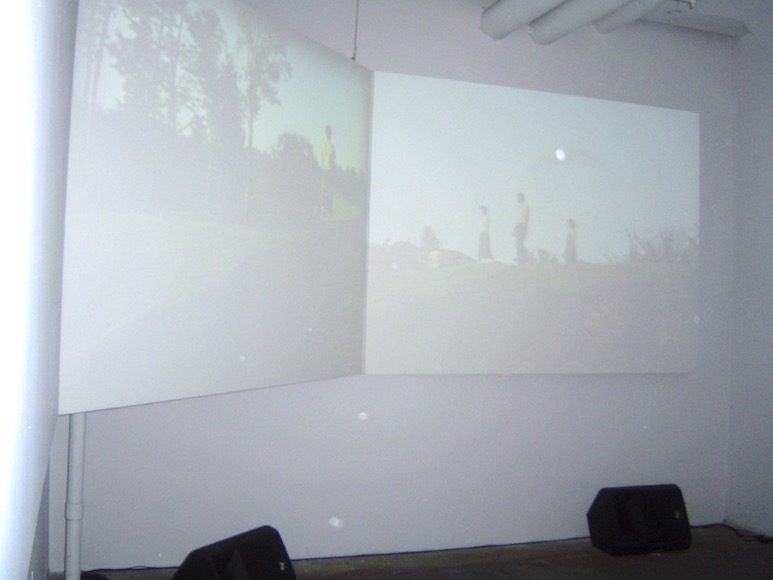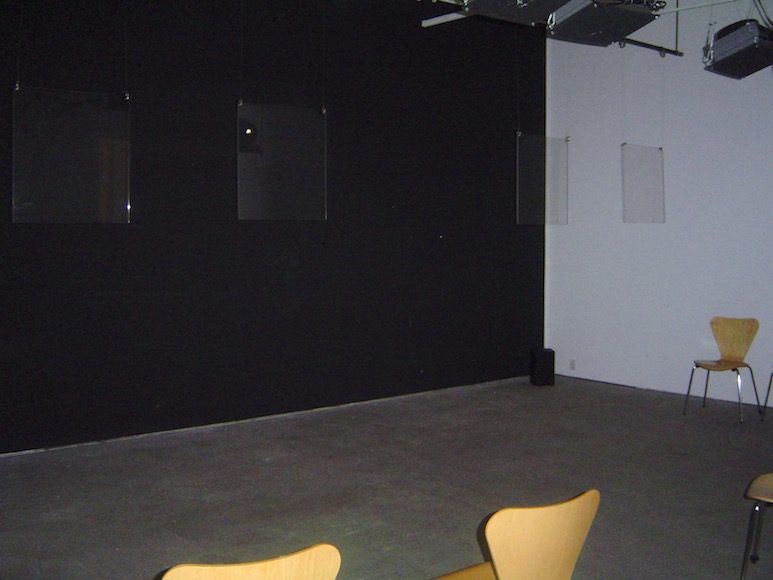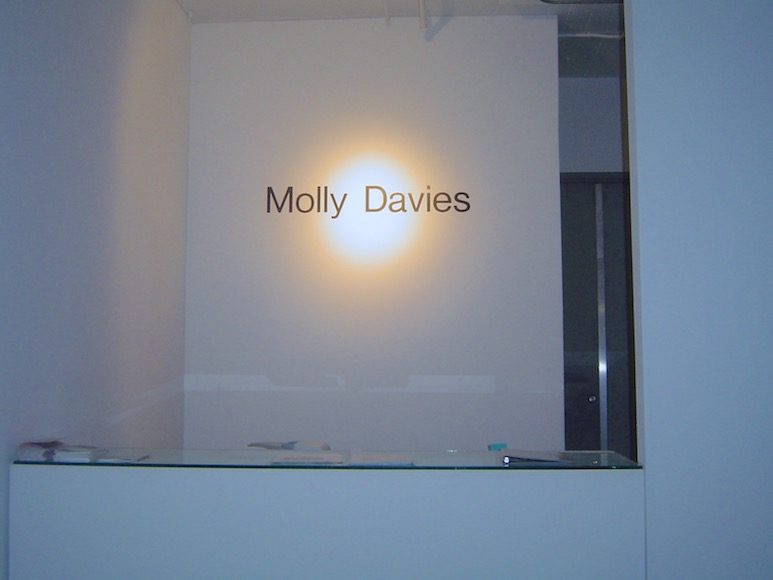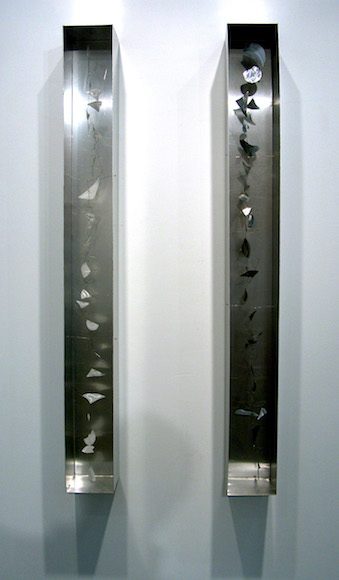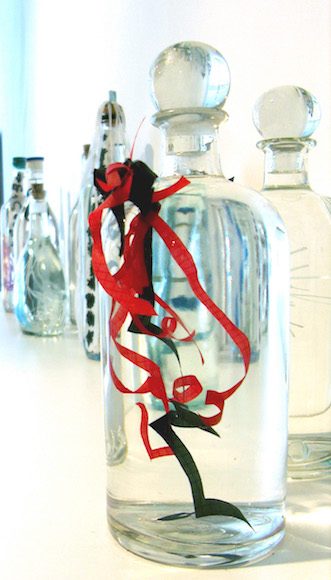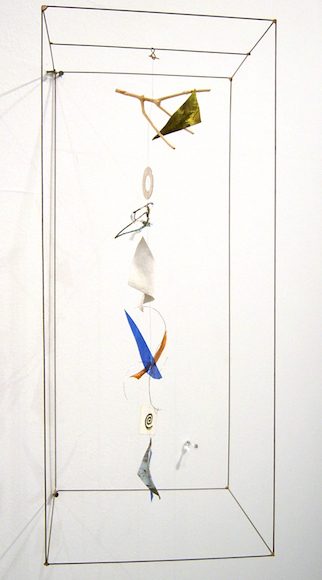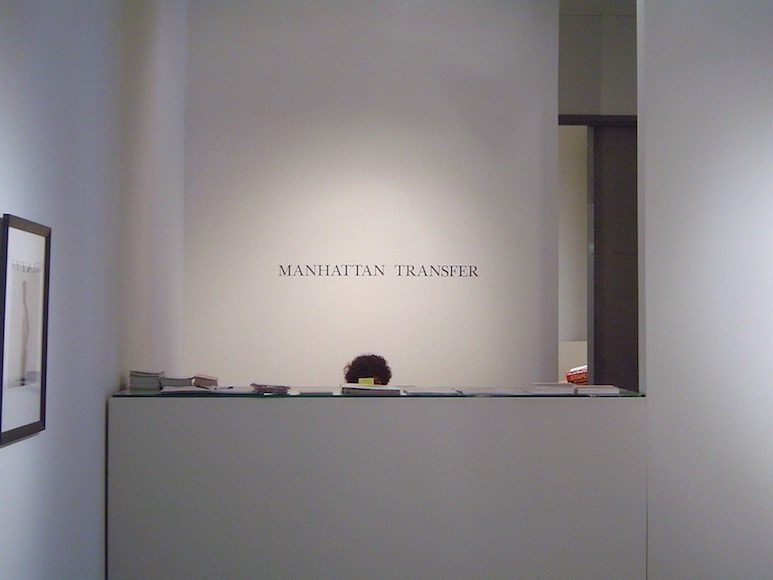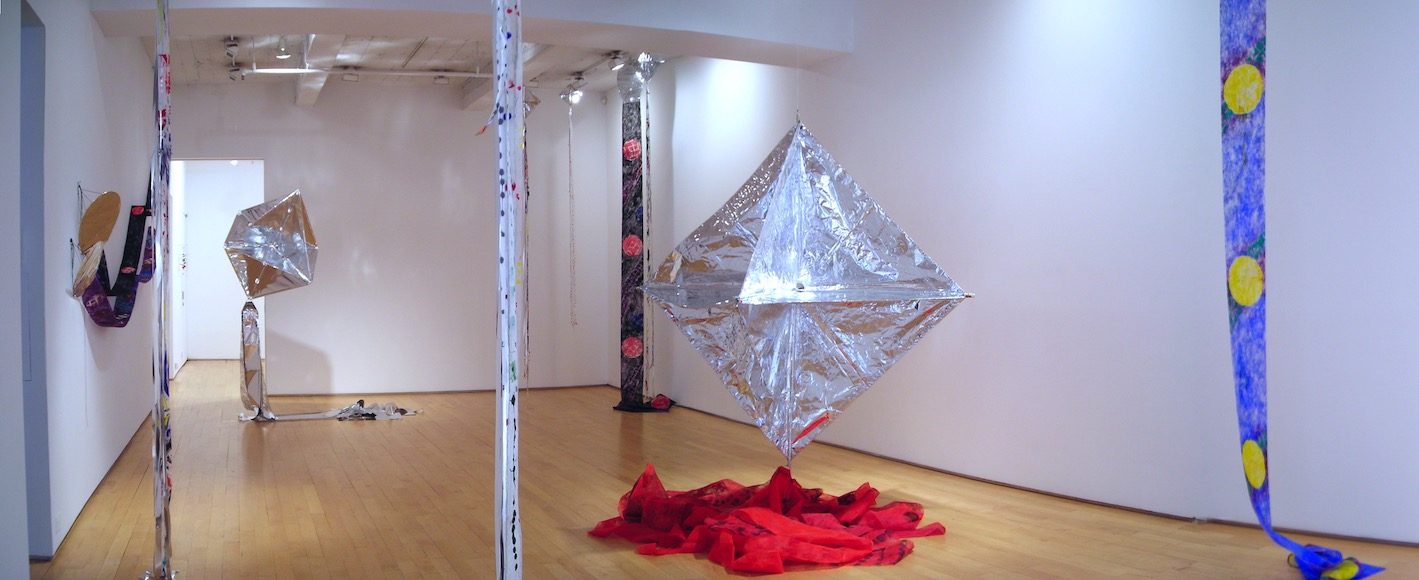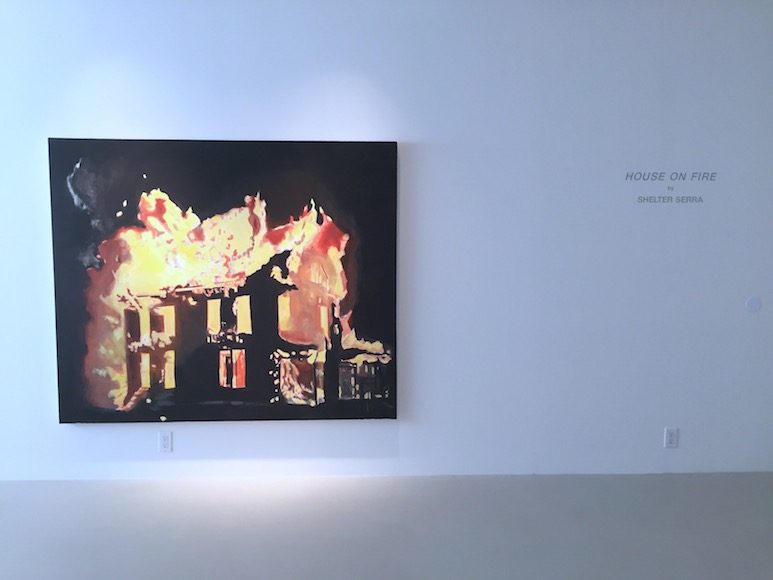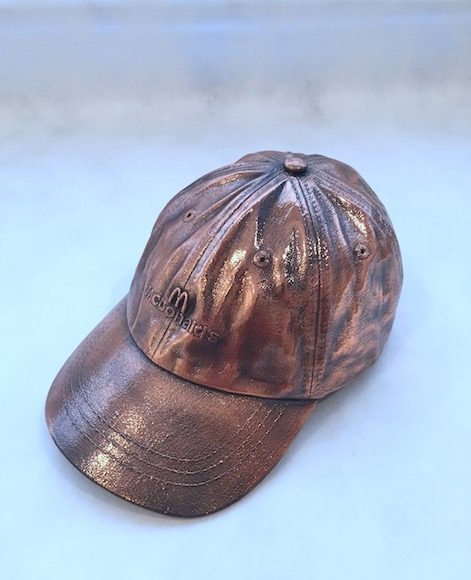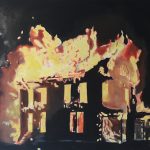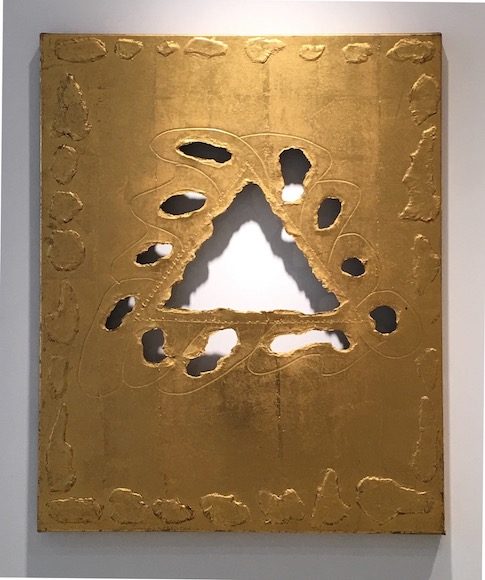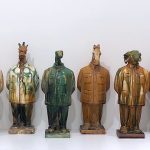CAGE NAM JUNE: A Multimedia Friendship
Curated by Kenneth Silverman

Photo: The John Cage Trust and the John Cage Collection, Northwestern University Music Library

Installation view


Nam June Paik, 1965
William S. Wilson Archive

Nam June Paik
Mixed media on antique scroll

Suite 212, 1977
Poster for a set of film sketches about New York to be broadcast every night in April; April 30 with John Cage
John Cage for Pulitzer Prize, John Cage NOT for Pulitzer Prize, 1965
Nam June Paik’s double-sided flyer with contrary messages about John Cage and the Pulitzer Prize
William S. Wilson Archive

Directed by Elliot Caplan
Excerpt from Cage/Cunningham in which Nam June Paik talks about cutting off John Cage’s necktie
Courtesy of Cunningham Dance Foundation
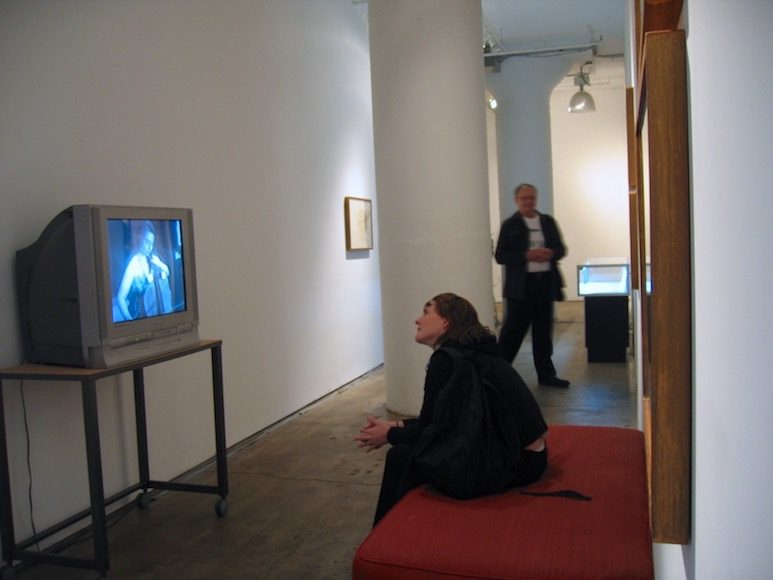
Filmed by Ira Schneider
Courtesy of Shigeko Kubota

John Cage
Correspondence and notes regarding WGBH-TV, a composition for TV that John Cage dedicated to Nam June Paik
New York City and Cambridge, Mass, September 1971
Courtesy of C.F. Peters Corporation

William S. Wilson Archive

Nam June Paik’s New Years greeting card to William S. Wilson
Acrylic on circuit board
William S. Wilson Archive

John Cage
Correspondence and notes regarding WGBH-TV, a composition for TV that John Cage dedicated to Nam June Paik
New York City and Cambridge, Mass, September 1971
Courtesy of C.F. Peters Corporation

As part of its Homage to Nam June Paik series, ZONE: Chelsea Center for the Arts celebrates the nearly thirty-five year association between Nam June Paik and John Cage– two uniquely inventive and versatile creators.
In representing the association of these two joyously adventurous artists, ZONE: Chelsea Center for the Arts will exhibit representative scores, videos, music, drawings, photographs, writings, installations, video sculpture, objets sonores, and conceptual art. At the opening night performance on October 5, 7pm, the renowned Cage interpreter, Margaret Leng Tan, will celebrate the Cage-Paik legacy with her toy piano/toy instrumental Hommage à John Cage/Nam June Paik. In addition to the opening night’s event, the gallery will host a panel discussion on October 19, 7pm. The panel consists of the Fluxus artist Alison Knowles, the dancer and dance historian David Vaughan, the vocalist/composer Joan La Barbara and the writer and critic William S. Wilson, four people who knew and worked with Cage and Paik.
October 5 – November 3, 2006
Opening reception:
Thursday October 5th, 2006
6-8pm
with performance by Margaret Leng Tan
Panel discussion on October 19, 2006
7pm, with
Alison Knowles
David Vaughan
Joan La Barbara
William S. Wilson
Kenneth Silverman
ZONE: Chelsea Center for the Arts celebrates the nearly thirty-five year association between John Cage and Nam June Paik. Uniquely adventurous and versatile creators, they worked in music, video, radio, writing, sculpture, film, drama, dance, and graphic arts.
Their pasts make the association seem at first unlikely. Born in Los Angeles, the grandson and great-grandson of Methodist ministers, Cage was a college dropout, twenty years older than Paik. Born in Seoul, Korea, to wealthy owners of a textile company, Paik completed a graduate dissertation at the University of Tokyo.
The differences marked their earliest contacts. They met in 1958 at the annual International Holiday Courses for New Music in Darmstadt, Germany. As a composer, Cage was already well known for his use of chance operations based on an ancient Chinese text. Having heard that the American called upon Asiatic thought, Paik attended Cage’s concert, he later confessed, with a “very cynical mind.”
Cage had early misgivings about Paik, too. In 1960 he attended a performance in Cologne of Paik’s “Etude for Pianoforte.” After playing a few minutes of Chopin, Paik picked up long scissors and jumped off the stage to where Cage was sitting. Then, as Cage recalled the event, Paik “cut off my tie and began to shred my clothes, as if to rip them off of me.” After also pouring over Cage a bottle of shampoo, Paik barged through the crowd and out the door. The ‘Etude,’ Cage said, left him with a “grim memory” of Paik.
Yet they came to intensely enjoy and admire each other. As Paik continued listening to Cage’s music in Darmstadt, he recalled, “slowly, slowly I got turned on. At the end of the concert I was a completely different man.” In his 1991 Two Teachershe remarked that “Cage means ‘bird cage’ in English, but he didn’t lock me up; he liberated me.” The violence in some of Paik’s performance art—e.g. smashing a violin to bits–remained foreign to Cage, who abhorred violence. Still, when asked what he would miss most if he died tomorrow, he reportedly replied: “The conversation of Nam June Paik.”
They especially drew together after 1964, when Paik moved to New York City, settling into a loft in Soho. He loved the city, as did Cage. Much as Cage fed into a live electronic piece open telephone lines from Luchow’s Restaurant and Con Edison’s 14thstreet power station, Paik created a set of film sketches about New York, Suite 212 (1977), his title invoking the city’s area code. Cage introduced him around town, and they worked with many of the same people–Laurie Anderson, Joseph Beuys, Merce Cunningham. Paik also performed in concerts and events by Fluxus, the Dada-ish group born out of Cage’s experimental composition classes at the New School.
And when apart they often corresponded. Paik-like, Paik sometime sent banal postcards that he comically transformed by funny drawings and cartoons. Once he mailed Cage a greeting card made of bank receipts for bum checks he had written. “Your writing is superb,” Cage replied. “Send me the least little thing you write.”
Paik remains best known, of course, for seeing early on and then exploring the artistic possibilities of television. His 1963 show at a gallery in Wuppertal, Germany, was the first exhibition anywhere of Video art. Later he helped develop the video synthesizer; translating electronic impulses into abstract colors and shapes, it made the cathode ray tube a canvas. Among his many other video creations are human-shaped sculptures built out of TV monitors, including a video sculpture of Cage. The New York Timesart critic John Canaday called him the “John Cage of the ordinary domestic TV set.”
A performer by nature—like Paik—Cage appeared on such popular early television programs as The Henry Morgan Showand I’ve Got A Secret; the Italian TV version of Double or Nothing (as a contestant); and on one of the earliest cable TV programs. He eagerly lent himself to Paik’s many video films. In Paik’s Global Groovehe tells an anecdote; A Tribute to John Cageshows him seated outdoors in Harvard Square, not-playing 4’33”. For Paik’s ambitious Good Morning Mr. Orwell—a one-hour TV show transmitted by satellite between New York and Paris—Cage not only appeared but also made a lithograph to be sold by Paik in raising the million-dollar production cost.
Cage particularly admired Paik’s Zen for Film—sixty minutes of shapeshifting specks of dust. He preferred it, he said, “to any film I’ve ever seen before or after. It’s one of the great films.” Paik could be an equally ardent fan, He imagined establishing a Laser TV station to broadcast nothing but John Cage.
The current exhibition at ZONE: Chelsea offers some of the looks and sounds of this multimedia friendship—representative scores, music, videos, drawings, photographs, writings, installations, video sculpture, objets sonores, and conceptual art.
Kenneth Silverman
Kenneth Silverman is Professor Emeritus of English at New York University. His books include Timothy Dwight; A Cultural History of The American Revolution; The Life and Times of Cotton Mathe; Edgar A. Poe Mournful and Never-ending Remembrance; HOUDINI!!!.; and Lightning Man: The Accursed Life of Samuel F. B. Morse. A fellow of the American Academy of Arts and Sciences, he has received the Bancroft Prize in American History, the Pulitzer Prize for Biography, the Edgar Award of the Mystery Writers of America, and the Christopher Literary Award of the Society of American Magicians. Currently he is writing a biography of John Cage.
Related:
Categories: exhibitions
Tags: CAGE NAM JUNE







